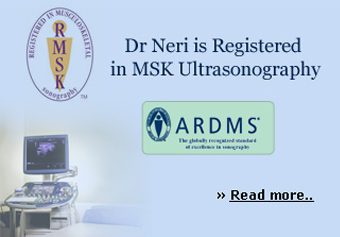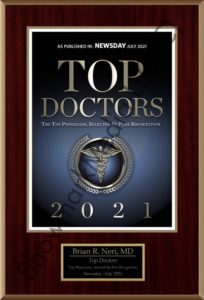ACL Reconstruction
The ACL is one of the major ligaments in the knee; it provides rotational stability. ACL reconstruction is done arthroscopically. There are two graft options for reconstructing an ACL: autograft tendon (taken from your own knee) and allograft tendon (taken from donated cadaver tissue). The type of graft that is used depends on your age and activity level. Two small incisions are made in the front of your knee with an additional incision for the graft. A camera is entered through one of the incisions to visualize all of the structures in your knee. Through the other incision, surgical instruments are placed to work on the tear. If there are meniscus tears that occurred with the ACL injury, these are also addressed at the time of surgery.
Following the surgery, you will be placed in a brace for 6 weeks’ time. You will use crutches the first week after surgery. After the first week, you are allowed to walk in the brace. Physical therapy is instrumental in ACL recovery. Most patients will go 2-3 times a week for 6 months. The duration of physical therapy depends on the activity that you are planning on returning to.
Arthroscopic Partial Menisectomy
Meniscus is the cartilage “shock absorber” that lies between the femur (thigh bone) and the tibia (shin bone.) There are two menisci in your knee. This cartilage can be damaged in various ways, from an acute injury to degeneration over time.
Arthroscopic surgery is used to address tears in both the medial and lateral meniscus. Two small incisions are made in the front of your knee. A camera is entered through one of the incisions to visualize all of the structures in your knee. Through the other incision, surgical instruments are placed to work on the tear. Most meniscus tears are not repairable, therefore, an arthroscopic shaver is used to clean up the tissue to a stable, healthy base. As much meniscus as possible is preserved to maintain a good cushion in your knee joint.
Following surgery, most patients experience pain relief within the first few hours to days. There is no need for a brace or crutches.
Arthroscopic Meniscal Repair
Meniscus is the cartilage “shock absorber” that lies between the femur (thigh bone) and the tibia (shin bone.) There are two menisci in your knee. This cartilage can be damaged in various ways, from an acute injury to degeneration over time.
Arthroscopic surgery is used to address tears in both the medial and lateral meniscus. Two small incisions are made in the front of your knee. A camera is entered through one of the incisions to visualize all of the structures in your knee. Through the other incision, surgical instruments are placed to work on the tear.
In the case of an actual repair of the meniscus, small sutures are placed into the meniscal tissue to bring the torn edges together.
Following surgery you will be placed into a long-leg knee immobilizer, which will keep your knee in extension. Depending on the actual type of tear that you had repaired, you may not be allowed to bear weight on the leg for six to eight weeks. You will have a machine at your house following surgery that will help bend your knee to aid in the healing process.
Cartilage defects
A cartilage or chondral defect is a focal area of cartilage loss in the knee. Cartilage defects do not have the ability to heal on their own and many times require surgery. There are many different cartilage procedures and they are specific to the type of lesion that you have. One of these procedures is a MACI procedure (Matrix-induced autologous chondrocyte implantation). A MACI procedure is a two step surgery. The first step involves taking a cartilage biopsy from the knee. This biopsy is then gown and expanded in a lab. In a second procedure the cartilage cells are implanted over the cartilage defect. A MACI procedure is best when the cartilage lesion does not affect the underlying bone. An OATS procedure is another common cartilage procedure. During an OATS procedure the cartilage defect is removed and then a size matched graft is used to fill the defect. This procedure is for someone who not only has a cartilage defect but also boney involvement in the lesion. Both of these surgeries require bracing and physical therapy after to help regain back range of motion and strength. Both surgeries also have weight bearing restriction but this will depend on the type of surgery that was done.




